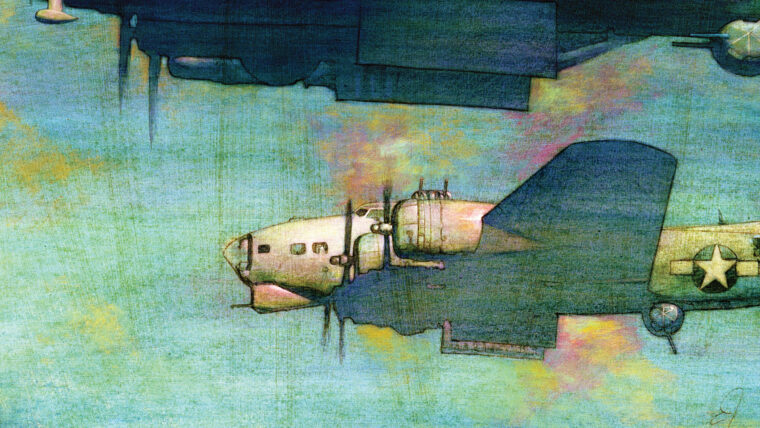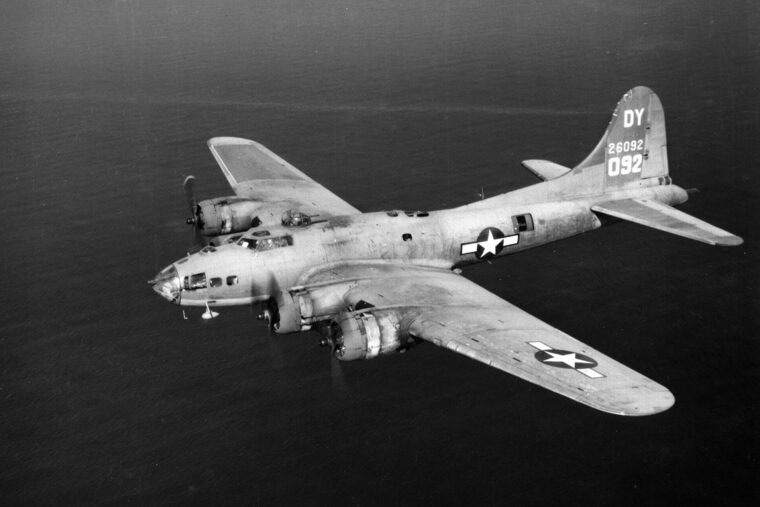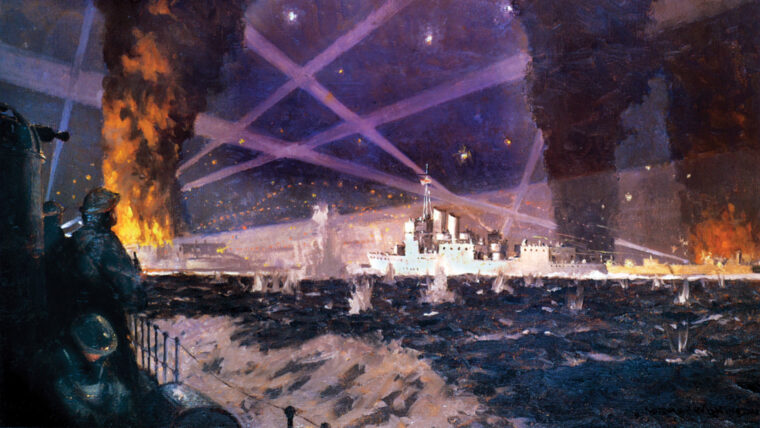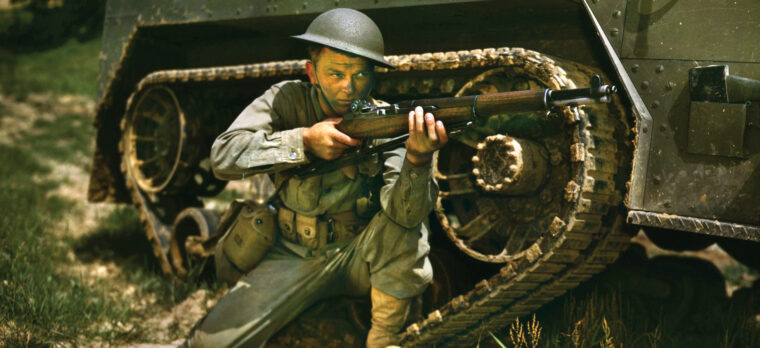
WWII
Night Fighting Corsairs
By Robert F. Dorr and Fred L. BorchJust before it was drawn into World War II, the United States began developing a night fighter version of one of its most famous warplanes. Read more


WWII
Just before it was drawn into World War II, the United States began developing a night fighter version of one of its most famous warplanes. Read more

WWII
By dawn on June 9, 1944, the men of the Company C, 1st Battalion, 325th Glider Infantry Regiment, of the 82nd Airborne Division found themselves engaged in a fierce firefight with German troops at the village of Cauquigny just west of the Merderet River in Normandy’s Cotentin Peninsula. Read more

WWII
By Christopher Miskimon
On January 25, 1945, every officer in Company B of the 15th Infantry Regiment of the American 3rd Infantry Division became a casualty in the fight for the “Colmar Pocket” except Lieutenant Audie Murphy. Read more

WWII
Radar, atomic bombs, jet engines and early cruise missiles were among the numerous technological advances of World War II. Read more

WWII
On July 28, 2018, at the Doubletree Hilton Hotel near Dulles Airport, outside Washington, D.C., Mariusz Winiecki, a 42-year-old Polish professor, told an audience of Americans about his experiences growing up in the small town of Szubin, 150 miles southeast of Warsaw. Read more

WWII
Early on the gray, chilly afternoon of Tuesday, December 26, 1944, a column of mud-stained Sherman medium tanks, armored cars, and half-tracks of the U.S. Read more

WWII
Poland does not always get the recognition it deserves for helping to defeat Nazi Germany and end the war in Europe. Read more

WWII
During World War II, many of England’s Royal Air Force (RAF) Class A airfields were made available to the U.S. Read more

WWII
The 44th Infantry Division, part of the U.S. Seventh Army’s XV Corps, was pushing elements of the battered German 25th Panzergrenadier Division back toward the German frontier in the Vosges Mountains during early December 1944. Read more

WWII
In the early morning of Monday, November 9, 1942, the german U-boat U-518 surfaced off the bleak Quebec coast. Read more

WWII
The German paratroopers marched the captured Canadian officer through the dark forest to the damp underground bunker that served as their platoon headquarters. Read more

WWII
On March 23, 1991, at a reunion of the postwar Nuremberg International Military Tribunal staffers in Washington, I had occasion to meet the former American prosecutor, Brigadier General Telford Taylor. Read more

WWII
Two decades after the carnage of the Great War, the world was again plunged into the cauldron of armed conflict. Read more

WWII
In 1939 the one thing that Adolf Hitler and Josef Stalin could agree on was the partition of Poland. Read more

WWII
During the 12 years of the highly militarized society of the Third Reich, some 20 million Germans—men and women as well as children—donned a uniform of one kind or another. Read more

WWII
On December 1, 1942, a 431st Bomb Squadron Boeing B-17 Flying Fortress named Omar Khayyam – The Plastered Bastard took off from a base codenamed Cactus on a photo-reconnaissance mission toward enemy-held Bougainville Island in the Pacific. Read more

WWII
It was Napoleon Bonaparte who purportedly said, “An army travels on its stomach.” Toward the goal of feeding his particular army’s stomach more efficiently, in 1795 the French general came up with an interesting solution to the problem. Read more

WWII
At high tide on the night of March 28, 1942, an American-built British destroyer disguised as a German torpedo boat steamed boldly up the estuary of the Loire River in occupied France. Read more

WWII
After the Great War, in which American troops were sent into combat with either the bolt-action M1903 Springfield rifle or the bolt-action British Enfield, planners in the War Department realized that, if the United States were ever drawn in combat again, they would need a far superior weapon. Read more

WWII
By Kelly Bell
On February 3, 1943, Lieutenant Herbert Kuntz of the 100th Bomber Group made the last flight by any German pilot over the Soviet city of Stalingrad. Read more